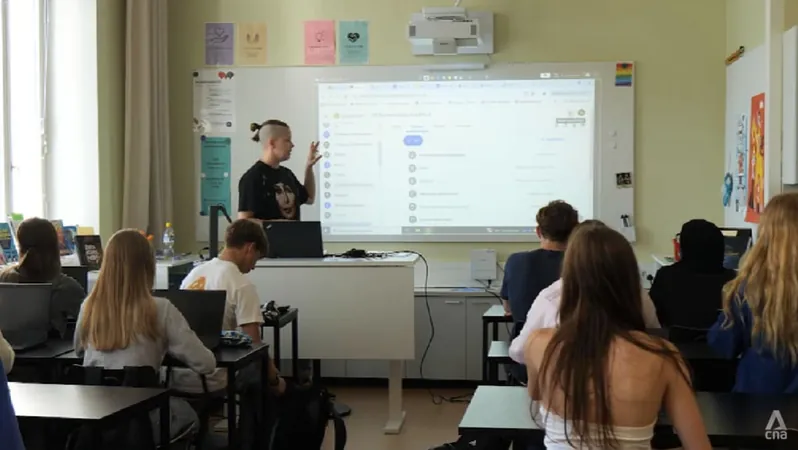
How Finland is Equipping the Next Generation to Combat Fake News
2024-10-01
In the heart of Helsinki, Finland is taking a proactive stance against the tide of misinformation by instilling critical media literacy skills in its youth. Schools across this Nordic powerhouse are revolutionizing how students engage with information, starting from a young age.
The Finnish curriculum is comprehensive, teaching children not only to question the origins of news stories but also to understand fundamental rights such as freedom of expression. One insightful student remarked, “In today’s social media, everyone has their own kind of bubble, with its own ideologies. So knowing what is true and what is not true is very important.” This underscores the vital need for discernment in an era where information is often manipulated.
Leading the Charge in Media Literacy
Finland shines as a global example of media literacy, consistently ranking at the top of the Media Literacy Index since its inception in 2017. This index evaluates 47 nations based on educational policies, media freedom, and the capacity of their citizens to resist disinformation. The Finnish commitment to media education is recently exemplified by the introduction of the book, “The ABC Book of Media Literacy,” which is presently distributed to schools, providing educators with essential resources to teach children about the media landscape.
Susanna Ahonen, an information literacy expert and a pivotal figure behind the book, emphasizes the historic context of Finland’s media environment. “We are neighbours of Russia, and we know how the information environment in Russia is,” Ms. Ahonen stated. She highlights the lessons learned from the past: during the Cold War, access to information was severely restricted, a situation that contrasts sharply with today's information overload. “To protect democracy, we have to fight disinformation constantly,” she asserts.
Building a Resilient Media Landscape
The initiative is supported by News Media Finland, which is keen on fostering an informed public to counteract the challenges posed by declining newspaper readership and revenue. Finland boasts one of the highest levels of public trust in journalism globally, underpinned by a strict self-regulation framework that maintains high editorial standards. With over 200 newspapers serving a population of just 5.5 million, the diversity of media options reflects a robust system aimed at keeping citizens informed.
Furthermore, as technology evolves, so does the media literacy program. Jyrki Poutanen, who has been instrumental in developing the new media literacy curriculum, stresses the importance of adapting education to meet the challenges posed by advancing technology, including the proliferation of artificial intelligence in newsrooms. “It’s such an overwhelming load of media information that continual support is crucial for understanding what’s truly happening,” he explained.
The Growing Threat of Misinformation
In a world already inundated with misinformation, Finland recognizes that the responsibility to educate the younger generation is more pressing than ever. With the rise of digital platforms and AI-generated content, the potential for misleading information increases exponentially. By armoring its youth with critical thinking and analytical skills, Finland is preparing them not only to navigate but to thrive in a complex media landscape.
As countries around the world grapple with the consequences of fake news, Finland's approach serves as a beacon of hope, showcasing that informed citizens are the first line of defense against the erosion of truth in society. Could this be the blueprint other nations need to combat their own misinformation crises? Only time will tell, but Finland is undoubtedly leading the way in educating its youth for the challenges ahead.



 Brasil (PT)
Brasil (PT)
 Canada (EN)
Canada (EN)
 Chile (ES)
Chile (ES)
 España (ES)
España (ES)
 France (FR)
France (FR)
 Hong Kong (EN)
Hong Kong (EN)
 Italia (IT)
Italia (IT)
 日本 (JA)
日本 (JA)
 Magyarország (HU)
Magyarország (HU)
 Norge (NO)
Norge (NO)
 Polska (PL)
Polska (PL)
 Schweiz (DE)
Schweiz (DE)
 Singapore (EN)
Singapore (EN)
 Sverige (SV)
Sverige (SV)
 Suomi (FI)
Suomi (FI)
 Türkiye (TR)
Türkiye (TR)